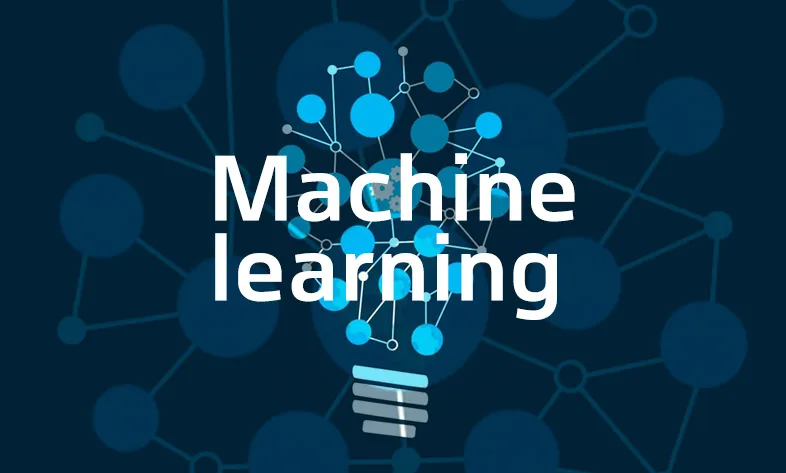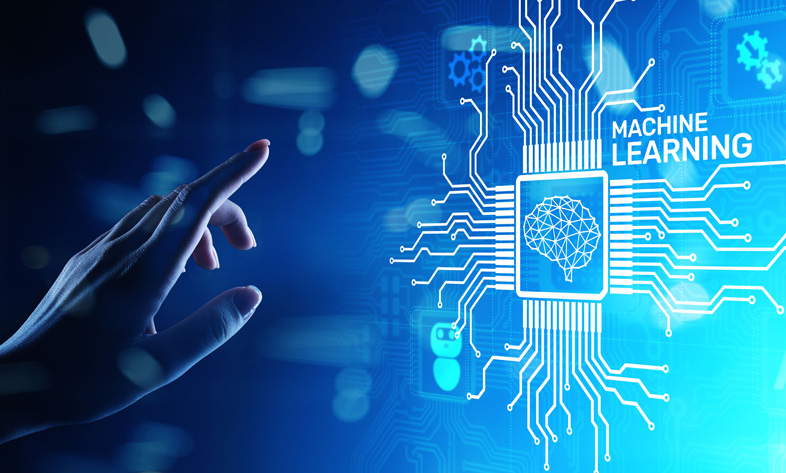What is machine learning and what is it used for?
Machine learning explained in simple terms: its definition, key algorithms, real-world applications, and how this transformative technology shapes the future.
If you have any questions, ask!

Machine learning explained in simple terms: its definition, key algorithms, real-world applications, and how this transformative technology shapes the future.
Machine learning is one of the most revolutionary technologies of the digital age; a system that learns from data, discovers patterns, and makes predictions—without needing direct programming.
In this article, we explore all the major aspects of machine learning in simple and practical language, from its definition and history to algorithms, industrial applications, beginner learning paths, and the future of this field.
If you want to know why machine learning has transformed everything—from medicine and economics to self-driving cars—don’t miss this article.
Machine Learning is a branch of Artificial Intelligence that aims to give computers the ability to “learn.” Instead of programmers writing precise instructions for every task, data guides the system by revealing patterns and determining what decisions should be made.
Machine learning uses mathematical models and algorithms to uncover hidden patterns in data and gain the ability to predict or classify outcomes.
The importance of machine learning grew rapidly as the volume of data in the world exploded.
Companies, hospitals, banks, and even our mobile phones generate massive amounts of data every day.
Machine learning can process this data, make sense of it, and extract insights that would otherwise be invisible to humans.
From movie recommendations on Netflix, facial recognition, financial market analysis, and self-driving cars to disease prediction—machine learning is everywhere.
In the rest of this article, we will discuss the history of machine learning, algorithm types, how each method works, real-world applications across industries, how beginners can start learning, and the future of this field.
This section serves only as a brief introduction to prepare your mind for what's ahead; however, we will cover each topic in full detail as we continue.
The history of machine learning goes back to the early days of computers, around the 1950s.
It was during this time that scientists like Alan Turing posed the fundamental question: “Can a machine think?”
Early attempts to build models resembling the human brain began in this era, but the severe limitations of hardware kept most ideas theoretical.
Nevertheless, the seeds of machine learning were planted during this period.
In the 1980s, the emergence of neural networks and the backpropagation algorithm triggered a major breakthrough.
For the first time, computers could behave somewhat like the human brain, learning complex patterns through experience.
Although this period marked an important milestone, hardware limitations still prevented widespread use of the technology.
From the 2000s onward, with the rise of powerful processors, advanced GPUs, and the explosion of Big Data, machine learning evolved into one of the most impactful fields in technology.
Algorithms became more advanced, models became more accurate, and billions of data points became available for training.
Today, machine learning is not only a part of artificial intelligence—it sits at the heart of many industries and shapes the future of technology.
Machine learning algorithms form the backbone of this technology.
They determine how a system learns from data, how it discovers patterns, and how it generates outputs.
The most common categories of algorithms include supervised learning, unsupervised learning, and reinforcement learning.
Each category has its own unique purpose, and choosing the right one is crucial for the success of industrial projects.
In supervised learning, data comes with labels—for example, images labeled as cats or dogs.
The model learns the relationship between inputs and outputs and can then predict new, unseen examples.
This approach is widely used in facial recognition, price prediction, and medical analysis.
In contrast, unsupervised learning involves data with no labels, and the model must identify hidden structures on its own.
This method is used for customer clustering, pattern discovery, and dimensionality reduction.
The third type, reinforcement learning, works similarly to learning in the real world.
In these algorithms, a model receives rewards or penalties based on its actions and learns to make the best long-term decisions.
This method is common in video games, robotics, control systems, and self-driving cars.
Together, these algorithms form the foundation of millions of intelligent systems around the world.

Machine learning is present in almost every industry and is rapidly transforming the way they operate.
One of its most significant applications is in medicine, where machine learning models can diagnose diseases from medical images, predict the likelihood of cancer, and even personalize treatment plans.
In many cases, their accuracy rivals—or even surpasses—that of human specialists.
In the financial sector, machine learning has sparked a major revolution.
Banks use it to detect fraudulent transactions, assess risks, predict prices, and analyze customer behavior.
Investment firms employ intelligent algorithms to execute high-speed trades, analyzing data that would be impossible for humans to process.
The transportation industry also relies heavily on machine learning.
Self-driving cars make decisions using sensor data, cameras, and maps.
Airlines use intelligent systems to predict delays and optimize fuel consumption.
Logistics companies rely on machine learning to determine the best delivery routes and reduce costs.
Starting machine learning may seem challenging at first, but with the right learning path, rapid progress is entirely possible.
The first step is mastering foundational concepts such as statistics, linear algebra, and probability, as many machine learning models are built upon these principles.
Next, you should learn programming languages suitable for machine learning, especially Python, which provides powerful tools and libraries for this field.
The following step is becoming familiar with essential libraries like NumPy, Pandas, Scikit-learn, and TensorFlow.
These tools simplify the process of building machine learning models and allow you to create powerful systems without having to implement everything from scratch.
Alongside learning the tools, it’s crucial to study theoretical concepts such as neural network architectures, evaluation metrics, and data preprocessing techniques.
Finally, the most important step is practicing with real projects.
By working on small projects such as spam detection, housing price prediction, or customer data analysis, you can significantly improve your skills.
Participating in Kaggle competitions, reading new research papers, and engaging with scientific communities will help you stay up-to-date and advance your professional journey faster.
The future of machine learning is brighter than ever.
With the rise of quantum computing, increased processing power, and access to massive datasets, models are becoming more accurate and more powerful each day.
In the near future, machine learning will play a major role in drug design, personalized medicine, smart agriculture, energy management, and even education.
Self-driving cars, currently in their testing phase, will become an inseparable part of transportation within the next few years.
Smart cities will use algorithms to better manage traffic, predict crises, and optimize public services.
In the environmental sector, machine learning can more accurately forecast climate change patterns and help reduce the harmful effects of human activity.
Generative AI and large language models, alongside machine learning, will deeply transform the future of content creation, communication, economics, and science.
The combination of these technologies creates unprecedented power capable of optimizing many human processes.
Ultimately, machine learning is not a passing trend—it is the foundational infrastructure of future technology.
Machine learning is a subset of artificial intelligence focused on learning from data, while AI includes any system that demonstrates intelligent behavior.
Yes, programming knowledge—especially Python—is essential, although you don’t need to be an expert at the beginning.
It can be challenging at first, but with the right learning path and consistent practice, anyone can learn it.
Everyone from doctors and banks to transportation sectors, online stores, tech companies, marketing specialists, and even governments.
Machine learning automates many repetitive tasks, but human expertise is still essential. This technology is more of a helper than a complete replacement.
Source » itroz Academy


Follow the guide to set up your domain email on any device or OS, including both smartphones and computers, quickly and easily.

This guide is useful for automatically forwarding your website emails set up on your domain to other email accounts, such as Gmail and others.

Step-by-step guide to install Thunderbird on macOS; download, setup, and manage multiple email accounts easily and efficiently.
Comments (0)